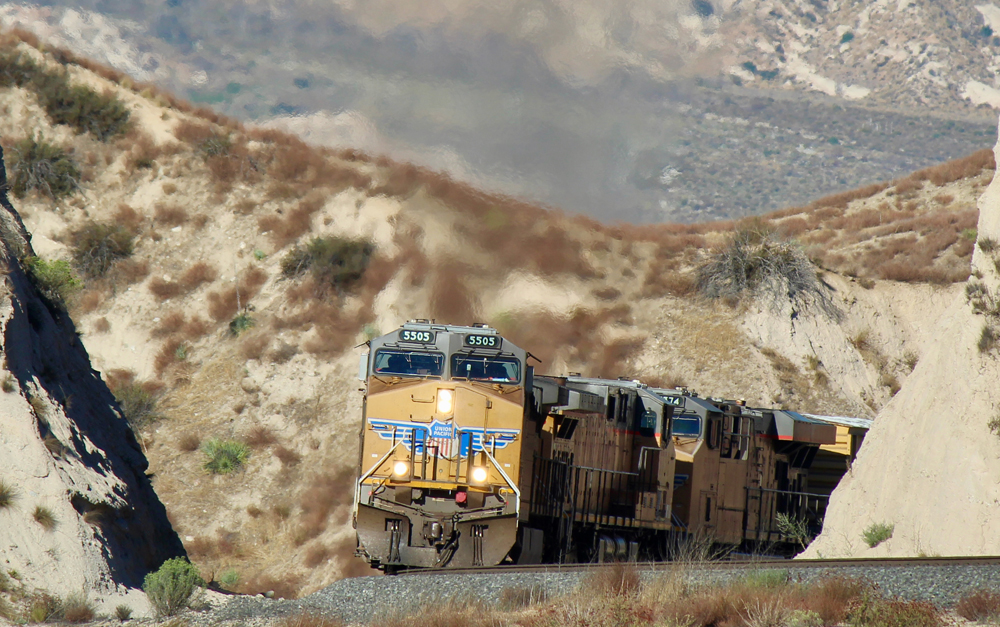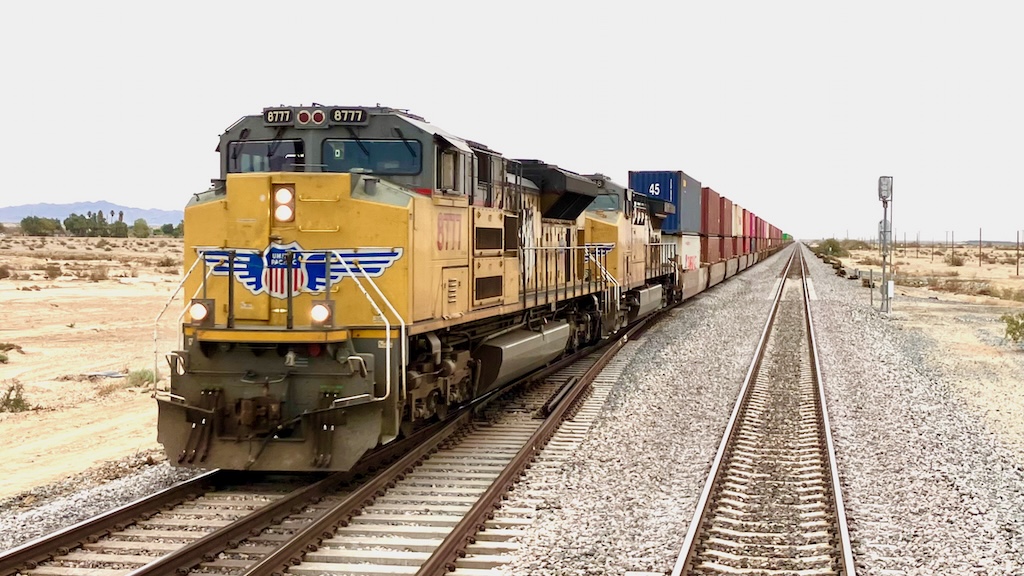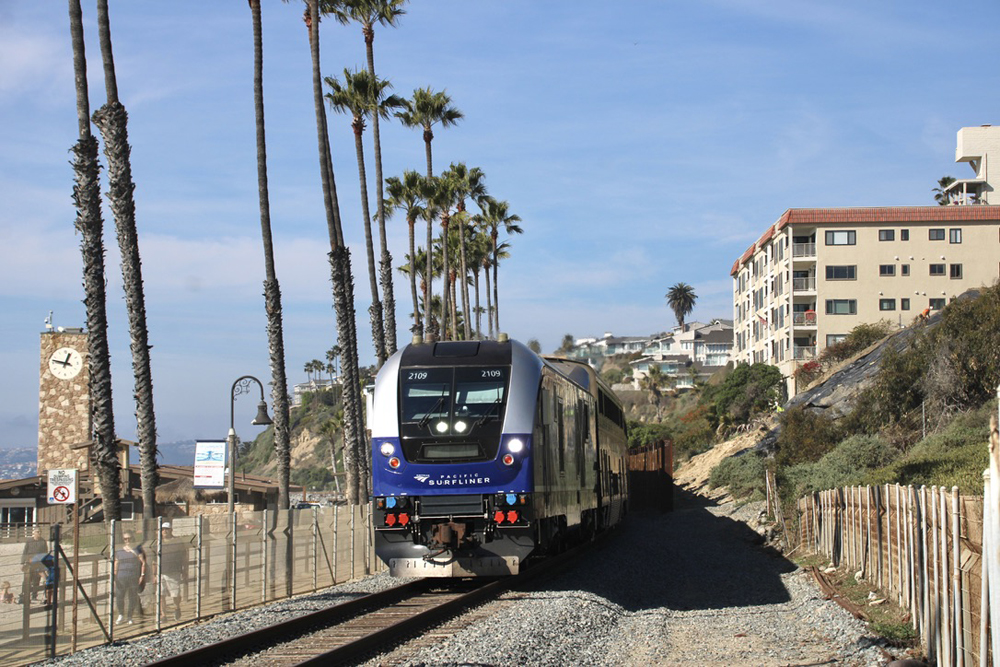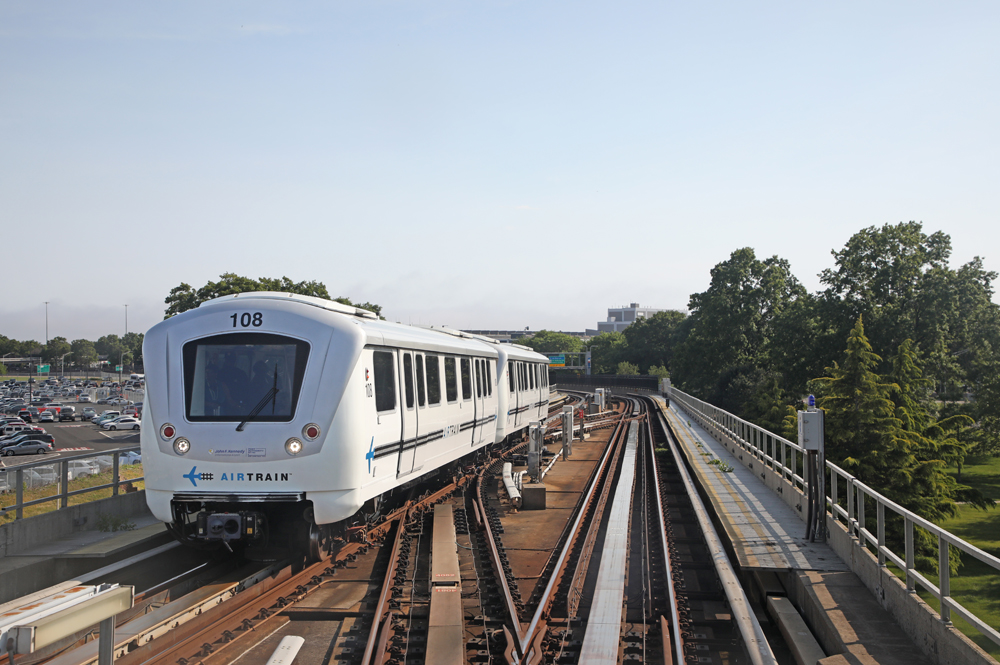
WASHINGTON — Railroads have filed suit against the California Air Resources Board’s new diesel locomotive emissions standards, arguing that the state body lacks the authority to implement the In-Use Locomotive rule.
The Association of American Railroads and the American Short Line and Regional Railroad Association, on behalf of their members, filed suit against the California Air Resources Board in the Eastern District of California over the In-Use Locomotive regulation that was approved on April 27. The groups have asked the court to delay implementation of the new rule until legal challenges are resolved.
AAR and ASLRRA say the CARB rule would limit the useful life of the nation’s 25,000-unit locomotive fleet and mandate their premature replacement with zero-emissions locomotives.
Zero-emissions locomotives have not been sufficiently tested in prototype or operational service and are not commercially available, the lobbying groups said.
“Movement of goods and movement toward greater sustainability is not an either-or proposition; for rail, these are mutually inclusive,” AAR CEO Ian Jefferies said in a statement today. “All American families want and deserve clean air and a competitive economy that can support quality jobs. Rail supports both and has an unwavering commitment to continue to go even further in advancing sustainability.”
California has long been the proving ground where the railroads and CARB have partnered and worked collaboratively to drive significant reductions in emissions. Railroads’ partnerships with CARB in past years have successfully reduced emissions from line haul and yard operations across the state. Initiatives such as zero-emission cranes, yard service vehicles and other technology are at work in yards across California and the nation as anti-idling systems, fuel management systems and the use of renewable fuels are simultaneously reducing locomotive emissions.
Although pilot programs are in the works to test battery-electric and hydrogen fuel-cell locomotives, a clear technological path has not yet emerged and will require additional testing and development, the group said.
“While the urgency to act is real and unquestionable, CARB uses unreasonable, flawed assumptions to support a rule that will not result in emissions reductions,” Jefferies said. “Railroads have urged CARB to take the proven path of collaboration and build on our shared successes, but those arguments were rejected out of hand. Railroads are working toward reliable, efficient zero-emissions technologies; however, they cannot simply be willed into immediate existence by policymakers.”
Throughout the rulemaking process, railroads, suppliers and other stakeholders made clear the entire industry is working to develop and test zero-emissions technologies and the supporting infrastructure capable of powering the complex, interconnected rail industry. Although significant progress has been made in recent years, these same parties argued before CARB that zero-emissions locomotives are not yet commercially viable. Despite these arguments and the unavailability of qualifying zero-emission locomotives, the CARB rule would begin charging railroads that operate locomotives within the state billions of dollars annually starting when the rule is expected to go into effect in October.
“Short line railroads operating in California provide critical first- and last-mile service on lower density branch lines, keeping smaller shippers in rural areas and small towns connected to the national freight rail network,” ASLRRA President Chuck Baker said in a statement. “While the spirit behind this regulation is consistent with railroad’s environmental commitment, the rule itself is unworkable and infeasible for short lines – its implementation would literally bankrupt some small business short lines. And the rulemaking does not acknowledge the impact of the elimination of some short line rail service to Californians. For shippers, it eliminates an efficient means to market and threatens the competitiveness of California’s products. For the public, it means the rising cost of products and a modal shift to trucks – a far less safe means of transportation resulting in more fatalities and injuries, more congestion on California’s roads, more burden on the California taxpayer to pay for road damage, and more micro plastics from shredded truck tires in the environment and water supply.”
In the lawsuit, AAR and ASLRRA argue that CARB lacks the legal authority to promulgate the In-Use Locomotive Rule. Due to the interconnected nature of rail operations and the need for uniform regulatory policies, Congress, the courts, federal regulators, and even CARB itself have long acknowledged that the federal government has exclusive authority to regulate rail operations.
As a part of the suit, AAR and ASLRRA filed to preliminarily enjoin implementation and enforcement of the rule while the district court considers the case.














Just like the government to mandate the use of unproven, impractical, and in some cases nonexistent technologies.
Couple that with the belief on the coasts in one size fits all solutions and you have the resistance and regulatory mess we see everywhere today.
Railroads, businesses, and individuals will accept, adopt, and even flock to new technologies where they are proven, reliable, safe, appropriate to the task, and economically viable.
When the short lines who can’t afford the cost, either the fines or the capital, to comply with these regulations go under, how many jobs will disappear? How many more trucks will be on the road? How much will the increased cost of transportation drive up the cost of everything we need?
All in the need of a patently unachievable goal.
Just more of the same from Crazyfornia.
Every time I went there, I always got the feeling (vibe) that I was dealing with children in adult bodies.
The CARB thinks if they mandate it, the railroad builders will magically invent it. Why not mandate a perpetual motion machine? That way we would have “green” energy! They have mandated various reductions in diesel smog and soot over the years. Our air is much better. So, I believe their continued existence demands that they mandate another reduction. Otherwise why would we need them? Now the cures are more costly than the disease.
If California doesn’t want railroads, so be it. Sever the connections and don’t rebuild.
The railroads have made great progress in reducing emissions on their new locomotives. As noted zero emissions even if the railroads electrified the main lines is not necessarily true. Unless it is wind, solar, water turbine or nuclear there is emissions at the point of generation. And any electrification will take years just to install the overhead lines and support substations. Also California has already had blackouts and near blackouts with existing electric demand. Where is all this extra electricity going to come from. More power plants regardless of generation mode takes time to build. Stoping railroads using some of the most efficient engines will only lead to more road traffic and higher emissions or further loss of business to other states with good rail access for their citizens. Common sense is needed in any proposed new regulations and in the case of railroads should be federal not state by state.
Electrification of everything for vehicles to household heating will be a major cause of warming the ecosphere. Line losses from generation to consumer are on the order of 50%. Every single kWh of wasted electrical powerbeomes heat.
Any kind of zealotry will always attempt to dictate policy instead of collaborate on them. The same kind of zealotry is what drove prohibition of booze through the 18th Amendment from 1920-1933. Also a reminder that the diesel dictate applies to trucks as well. So the arguments about CARB pushing more freight to trucks doesn’t work 100%. We still haven’t seen a lawsuit from the trucking industry. CARB is banning the sale of all diesel trucks by 2035.
If by zealotry you mean the US railroads’ idiotic refusal to electrify.
Fossil fuels are going away. Period. No amount of bloviating is going to change that. And with the current incompetence from the Class Is, they are setting up to pull a Penn Central and become Conrail 2.0.
@ Simon Porter: Zealotry as in making dictates without understanding some of the underlying requirements involved. Lack of understanding of *why* people were prone to public drunkeness in that era, led to blanket banning of consumption.
Green zealotry is leading to these blanket dictates to change things in industries that have long investment cycles. Not unlike the attempts to reduce sulphur in emissions, it took several years to get ULSF into the fuel ecosystem and engines to support it. Scrubbers at large coal power plants were demanded instantly when the technology was known, but it took years to get the technology in place and working properly and then LSC from the Wyoming changed the formula.
In this case I am stating the railroads place their capital in long term in assets that can last 20-30 years, otherwise they have to write off the loss via depreciation.
I just spent some time discussing green efforts with the chief engineer of a cruise ship line. The Port of Seattle is gaining a movement to ban cruise ships if they don’t go 100% green. He gave me an example of a ship in port that is only 13 years old, yet it has to work for at least another 15 years before the cruise line can sell it or scrap it at break even. To cope they have installed scrubbers, enzyme waste disposals, use ULSF bio-fuels to try and extend their life cycles until the ship is consumed. And the ports they serve have to support them!
I see railroads the same way. Its not just the technology, its the life cycles and the supporting infrastructure needed to support said technology. I have been critical of railroads in these forums, but I understand the economics. One state is attempting to mandate a change that has a federal implication to the interoperability of the North American rail network.
Instead of massive share buybacks (waste of capital IMHO), they could have actually increased their cooperative actions with those involved ie: Progress Rail, Watco, Siemens, Cummins, etc. But the Class 1’s want the private sector to come up with the best solutions. That is where CARB should be working with the AAR PR and lobbyists in Congress to find some investment incentives to help push things along , just like the EV tax credits did for cars.
Short lines don’t need high-tension catenary, just trolley wires.
Catenary is not economical at all except for high density passenger corridors. You would instantly eliminate all branch lines and spurs. What industry will pay millions for a spur with catenary. More freight on the roads. Extreme agendas have no place in the economy or our utilities. On average our air is cleaner now than probably at any time in the past 100 years. When the free market finds a better way to reduce the cost of fuel then the better technology will win out.
Complete nonsense. Oil industry claptrap.
India and Russia both haul more ton-miles of freight, and both countries have nearly entirely electrified networks. India in particular runs double stack container on *flat cars*, not well cars, under wires, at high speeds. After decades of buying American diesels, Isia is buying Chinese electrics, because Wabtec & Progress are in denial about the future of railroading.
American freight railroads will inevitably electrify, before or after they are nationalized.
And Mr. Porter, where is all this electricity going to come from? You would have to cover the United States in Wind mills and Solar farms to generate what would not even amount to one third of the electrical needs of railroads if forced to electrify. That mean you would still require Natural Gas Generation or some kind of alternative fuel (Trash?) to provide the balance. That means still no zero emissions.
As usual the extremist view scream utopia when the reality is that the ability to produce that Utopia doesn’t even exist now or in the near future. While a dent in in emissions could be made, a form of power that does not rely on some form of carbon based generation or with carbon based emissions is the thing that all these green extremists don’t want to talk about.
So please Mr. Porter, give us the details of how this huge volume of electricity is going to occur based on zero emissions and the technology currently (pun intended) available now or in the near future. What do you think is providing the power for all of this India/Russian electrical freight hauling you tout? If it is not nuclear generated, then it is coal powered, you can bet on that. There may be some hydro-electric but not near enough to satisfy the needs of the population and industry. I know, I have been there and seen what is available. So don’t give us your extremest environmental “claptrap.” Give us the facts of your case.
Electricity can be emission free depending on how it is generated. I believe Milwaukee and possibly Great Northern electrification in the Cascades was generated by water turbines in dams and would have been emission free a long time ago.
The biggest problem I see here is that it will put short lines out of business and push the freight onto trucks, which produce more emissions. I hope the railroads prevail on this one.
As of 2022, more power in the US was generated by solar+wind than than coal. And coal is disappearing fast.
In California, the ratio is even higher, since they ended their contract with the Navajo Generating Station, ironically one of the few electric freight operators in the country (though isolated from the national network).
IMHO what the regulators are missing is that even the oldest and dirtiest diesel locos produce less pollution per ton of freight moved then trucks. For shortlines gensets and the like probably would be helpful provided the shortlines are able to afford them.
The answer is catenary and electric locomotives. Hydrogen and batteries are impractical and unproven.
I don’t know why everyone thinks hybrid and electric are emission free. They are not, Electricity is definitely not a zero emission process, nor is hybrids. They may ultimately be less emission but never “zero”
Roger that. Environmentalist never talk about this information. It goes against their agenda… And the FACTS do not support their assumptions, not now and not for some time yet.